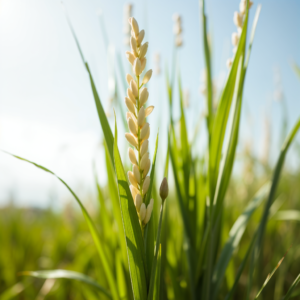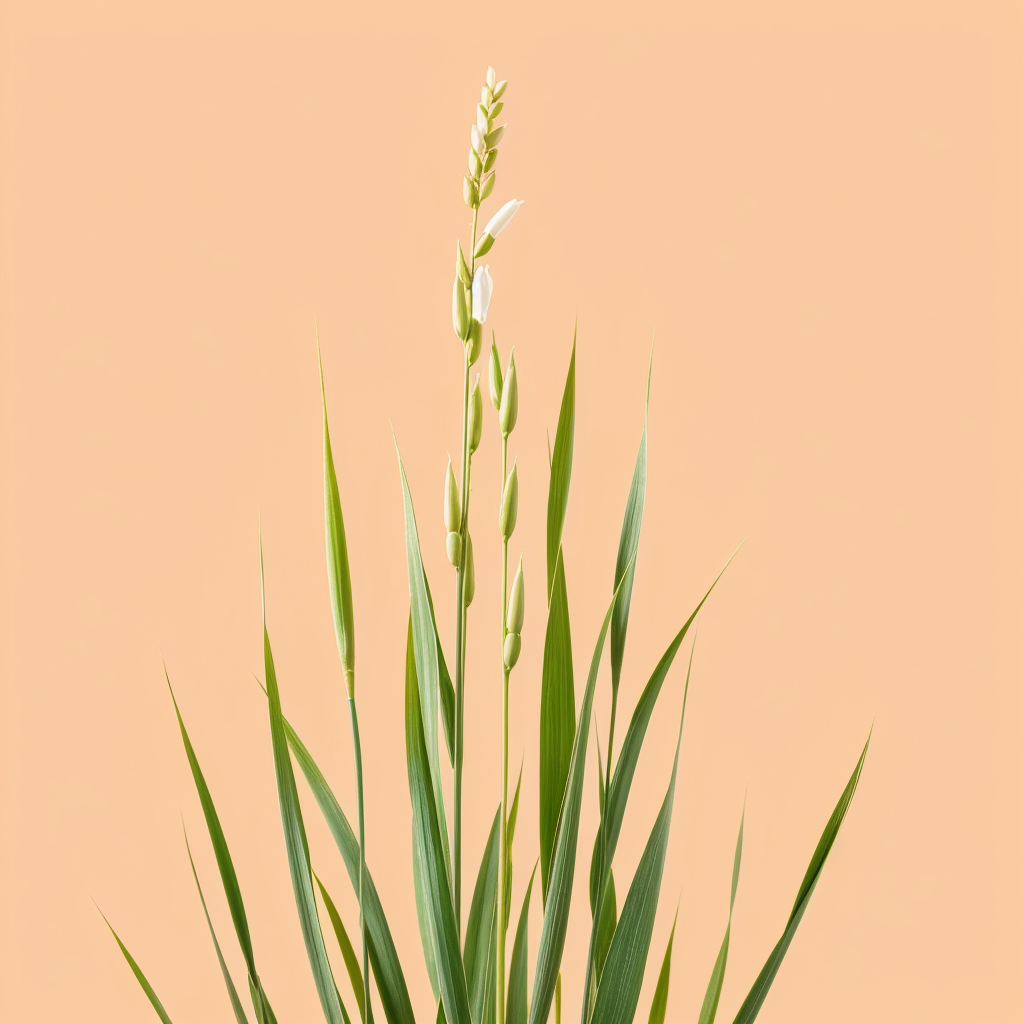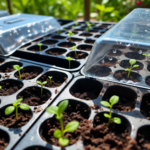Introduction: Sesame Seed Plant
The sesame seed plant (Sesamum indicum) is an ancient and versatile crop that has been cherished for centuries. Known for its resilience and oil-rich seeds, the plant thrives in warm climates and has become a staple in both culinary and medicinal fields. With its adaptability and many uses, the sesame seed plant is a valuable crop in many regions around the world.
– How to Grow Sesame Seed Plant with Ease
Growing a sesame seed plant is simple and rewarding. It flourishes in hot climates and requires minimal care once established.
-
Ideal Climate:
Sesame loves heat! It thrives best in temperatures between 25°C and 35°C, making it perfect for sunny, arid regions.
-
Soil Preference:
-
This hardy plant prefers well-drained, fertile soil with a neutral pH. It performs well even in sandy or loamy soils.
-
Minimal Watering:
-
Sesame is drought-tolerant and requires little water once it’s grown. It’s a great crop for areas with low rainfall.
-
Planting Method:
-
Plant sesame seeds in spring when the soil warms up. They sprout quickly and need to be spaced about 20 cm apart.
-
Quick Harvesting:
-
Within 90-120 days, you’ll be ready to harvest. Simply cut the plant when the pods begin to dry and hang it upside down to collect the seeds.(Relevant info)
– Different Types of Sesame Seed Plant to Explore
There’s more to sesame seeds than meets the eye. Each variety offers something unique in terms of flavor and use.
- White Sesame Seeds: Mild and slightly sweet, these are a favorite in baked goods and as a crunchy topping.
- Black Sesame Seeds: With a bold flavor, black sesame seeds are often used in Asian cuisine to add depth and complexity.
- Brown Sesame Seeds: Perfect for oil extraction, brown sesame seeds have a rich, nutty taste.
- Red Sesame Seeds: Less common but rich in flavor, red sesame seeds add a slight bitterness, which works well in savory dishes.
– Health-Boosting Nutritional Benefits of Sesame Seeds
These tiny seeds pack a huge nutritional punch! Sesame seeds are not only tasty but also incredibly healthy.
-
Heart-Healthy Fats:
-
Sesame seeds are loaded with unsaturated fats, which support heart health and lower bad cholesterol levels.
-
High in Protein:
-
A great source of plant-based protein, sesame seeds are perfect for vegetarians and vegans looking to increase protein intake.
-
Rich in Minerals:
-
Full of calcium, magnesium, and zinc, these seeds strengthen bones and boost overall health.
-
Antioxidant Power:
-
Sesamin and sesamolin, two antioxidants in sesame, protect against cell damage and inflammation.
-
Digestive Health:
-
Thanks to their high fiber content, sesame seeds aid digestion and help maintain a healthy gut.
– Everyday Uses of Sesame Seed Plant and Oil
The versatility of sesame seeds and sesame oil is amazing. They are staples in kitchens and skincare routines across the globe.
-
Culinary Delights:
-
Sesame seeds top bread, sushi, and salads, while sesame oil is a flavorful ingredient in stir-fries and sauces.
-
Skincare Wonders:
-
Sesame oil is a natural moisturizer packed with Vitamin E. It helps hydrate skin and protect it from sun damage.
-
Medicinal Applications:
-
In traditional medicine, sesame seeds are used to support digestion and relieve joint pain.
-
Eco-Friendly Industrial Uses:
-
Sesame oil’s stability makes it a great ingredient for natural lubricants, soaps, and even paints.
– Incredible Health Benefits of Sesame Seed Plant Oil
Sesame oil isn’t just delicious—it’s also great for your health.
-
Supports Heart Health:
-
High in healthy fats, sesame oil can help reduce cholesterol and improve heart function.
-
Reduces Inflammation:
-
The antioxidants in sesame oil are known to lower inflammation, promoting overall wellness.
-
Protects and Nourishes Skin:
-
Used in skincare, sesame oil deeply moisturizes and protects the skin from harmful UV rays.
-
Strengthens Bones:
-
Rich in calcium, sesame oil helps maintain strong bones, particularly as we age.
– Where Sesame Seed Plant Grow Best: Major Producers
Many countries around the world successfully grow sesame seed plants.
-
India: One of the world’s top producers, India grows sesame seeds primarily in the states of Gujarat and Uttar Pradesh. Its warm climate is ideal for the crop.
-
Sudan: This African country is a major sesame producer, contributing significantly to the global market with high-quality seeds.
-
Myanmar: Known for its sesame exports, Myanmar plays a key role in supplying sesame seeds to neighboring Asian countries.
-
Nigeria: Nigeria’s sesame seed exports are growing rapidly, thanks to the plant’s resilience in dry climates.
– Sustainable and Environmentally Friendly Sesame Seed Plant Farming
Sesame farming is highly sustainable, offering environmental benefits that make it a great crop for modern agriculture.
-
Water Efficiency: Sesame is naturally drought-resistant and thrives with minimal irrigation, making it an eco-friendly choice.
-
Fewer Pesticides: Sesame plants are hardy and resist many common pests, reducing the need for chemical pesticides.
-
Soil Health: With its deep root system, sesame helps improve soil structure and prevent erosion, making it beneficial for the environment.
– Turning Challenges into Opportunities in Sesame Seed Plant Farming
While sesame farming is generally easy and rewarding, there are opportunities for improvement that can lead to even greater success.
-
Optimizing Yields: By carefully selecting the right planting times and using modern irrigation techniques, farmers can mitigate the impact of weather fluctuations and ensure more consistent yields.
-
Enhancing Pest Management: Natural pest control methods and innovations in organic pesticides can further strengthen sesame’s resilience, making it easier to manage occasional pest challenges like the sesame leaf roller.
-
Streamlining Harvesting: Innovations in mechanized harvesting are reducing the labor required, allowing farmers to harvest more efficiently while minimizing seed loss.
– The Growing Global Demand for Sesame Seed Plant
The global market for sesame seeds continues to grow, driven by increasing demand for sesame oil and health-conscious food products.
-
Top Exporters: India, Sudan, and Myanmar dominate the global sesame seed export market, with most seeds being shipped to Asia and Europe.
-
Key Importers: Countries like China, Japan, and South Korea import large quantities of sesame seeds for use in their traditional cooking.
-
Rising Popularity: As more people discover the health benefits of sesame seeds, demand in Western markets like the U.S. and Europe is steadily increasing.
– How to Properly Store Sesame Seed Plant for Maximum Freshness
To keep your sesame seeds fresh and flavorful, follow these simple storage tips:
-
Cool and Dry: Store seeds in a cool, dry place to prevent them from becoming rancid.
-
Airtight Containers: Use airtight containers to keep out moisture and extend their shelf life.
-
Refrigeration Option: For long-term storage, you can refrigerate sesame seeds. This keeps them fresh for up to a year.


